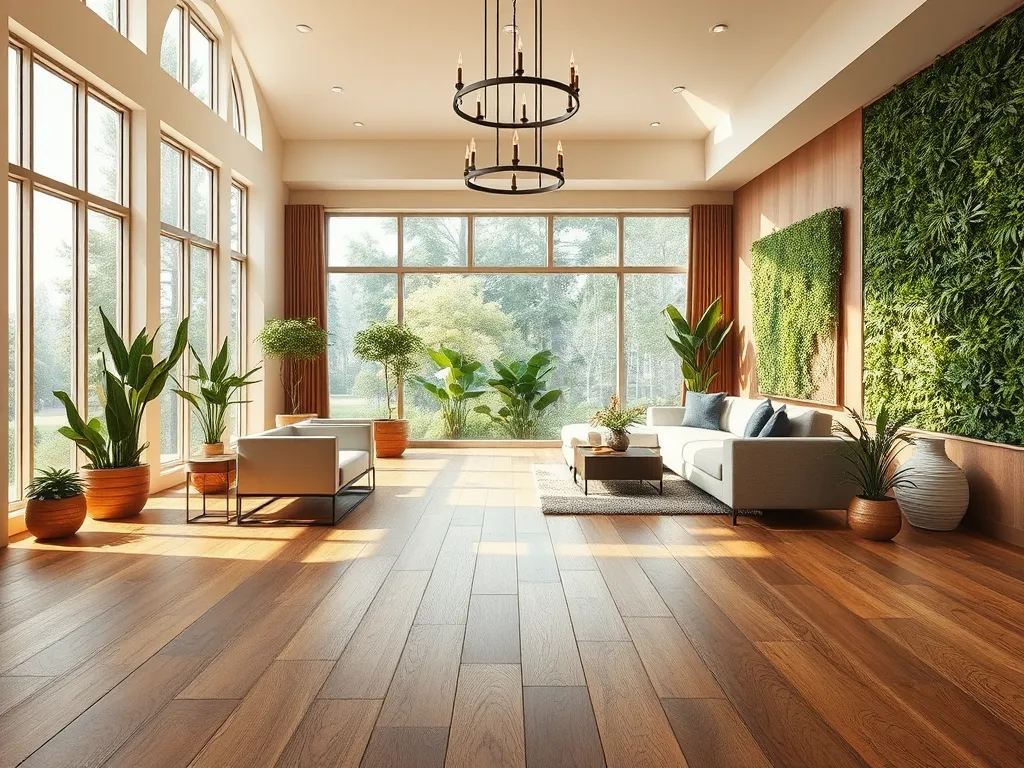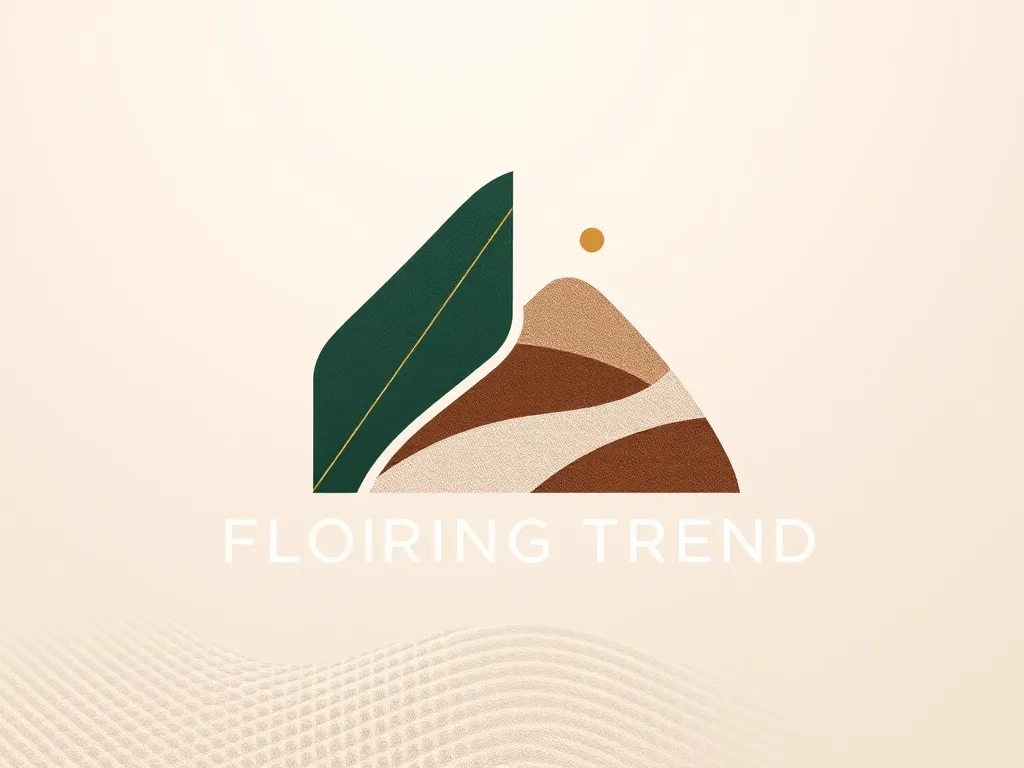Explore The Rise of Sustainable Flooring Materials Today

The Rise of Sustainable Flooring Materials
In recent years, there has been a significant shift in the flooring industry towards sustainable materials, driven by a growing awareness of environmental issues and a demand for eco-friendly options. This trend, termed The Rise of Sustainable Flooring Materials, highlights the ingenuity of designers and manufacturers who are responding to consumer preferences for greener choices. Flooring is a fundamental aspect of building design, and selecting sustainable options can have a substantial impact on environmental conservation and indoor air quality.
The Rise of Sustainable Flooring Materials is not just about utilizing renewable resources; it encompasses the entire lifecycle of flooring products, from production and installation to disposal and recycling. Consumers are becoming increasingly educated about the environmental footprints of traditional flooring materials, such as hardwood and vinyl, which often involve practices harmful to ecosystems. As a result, many have begun to explore alternatives that are kinder to the planet, opting for flooring solutions that reduce waste, utilize renewable resources, and promote healthier living environments.
Choosing the right materials is essential for eco-conscious homes, making options like Sustainable Flooring increasingly popular.
This movement towards sustainable flooring can be seen across various materials, with many options vying for attention. Innovations in production processes, along with an emphasis on reusable and recyclable materials, are at the forefront of The Rise of Sustainable Flooring Materials. From bamboo and cork to recycled carpets and linoleum, each type of sustainable flooring brings its own unique set of benefits to the table, allowing consumers to make informed decisions that align with their values regarding environmental responsibility.
Not only do sustainable flooring materials offer environmental benefits, but they also cater to a market that increasingly prioritizes aesthetics without compromising on quality or style. The Rise of Sustainable Flooring Materials signifies a harmonious blend of durability, visual appeal, and ecological integrity, ultimately reshaping consumer perceptions about what constitutes a good flooring product. As more manufacturers embrace sustainable practices, the options available to consumers continue to expand, making it easier than ever to find the perfect fit for any home or workspace.
In conclusion, The Rise of Sustainable Flooring Materials represents a pivotal change in the industry, reflecting a broader cultural movement towards sustainability. By choosing flooring materials that minimize environmental impact while ensuring quality and style, consumers are actively participating in conservation efforts. This article will explore the various types of sustainable flooring, their benefits, installation and maintenance considerations, trends in 2023, and the economic aspects that come into play when making this important choice.
Types of Sustainable Flooring Materials
One of the most popular sustainable options today is bamboo flooring. Bamboo is a rapidly renewable resource that can be harvested every three to five years without harming the plant. This sturdiness makes bamboo flooring an appealing choice for high-traffic areas, while its natural beauty brings warmth to any space. Additionally, bamboo absorbs carbon dioxide during its growth, contributing to a reduction in greenhouse gases.
Cork flooring is another fantastic sustainable alternative. Harvested from the bark of cork trees without cutting them down, cork is a renewable resource that can be collected every nine years. Cork has natural insulating properties, is resistant to mold and mildew, and provides excellent sound absorption, making it suitable for both residential and commercial settings. Its ability to trap air in its cellular structure also contributes to energy efficiency in heating and cooling.
Recycled material carpets are increasingly gaining traction in the sustainable flooring market. Made from post-consumer waste, such as plastic bottles, recycled carpets help divert waste from landfills while providing high-quality flooring options. These carpets are available in various styles and textures, allowing consumers to enhance their interior design while making an environmentally responsible choice.
Linoleum is another eco-friendly flooring material. Made from natural materials like linseed oil, cork powder, and wood flour, linoleum is a biodegradable option that has been around for over a century. Its durability, combined with its antimicrobial properties, makes it a popular choice for kitchens and commercial spaces. Linoleum also comes in a wide range of colors and patterns, allowing for creativity in design.
Eco-friendly hardwood alternatives, such as reclaimed wood or sustainably sourced timber, present an environmentally conscious choice for those who prefer traditional wooden flooring. Reclaimed wood comes from old buildings and furniture, reducing the demand for new wood while adding character and history to a space. On the other hand, sustainably sourced timber ensures that the wood is harvested responsibly, minimizing harm to forests and wildlife.
Benefits of Sustainable Flooring
Choosing sustainable flooring materials has a significant environmental impact reduction. By opting for products that utilize renewable resources or recycled materials, consumers contribute to less deforestation, reduced fossil fuel consumption, and lower carbon emissions during production. Additionally, sustainable flooring can help conserve water, as many eco-friendly materials require fewer resources during their manufacturing processes.
Health benefits also play a crucial role in The Rise of Sustainable Flooring Materials, particularly regarding low VOC (volatile organic compounds) emissions. Traditional flooring materials, especially synthetic options, can release harmful chemicals that affect indoor air quality. Sustainable choices, however, often have minimal or no VOCs, ensuring a healthier living environment for occupants.
In addition to health improvements, many sustainable flooring materials offer energy efficiency in production. For example, cork and bamboo require significantly less energy during their manufacturing processes compared to traditional hardwoods or vinyl flooring. This reduces the overall carbon footprint associated with these products, making them a more appealing option for environmentally conscious consumers.
Durability and lifespan are also notable advantages of many sustainable flooring materials. Flooring such as bamboo and cork can withstand heavy use, lasting longer than some conventional materials. This leads to fewer replacements over time, ultimately benefiting both the consumer and the environment by minimizing waste and resource consumption.
Finally, the aesthetic appeal of sustainable choices cannot be overlooked. With modern designs, colors, and styles available, sustainable flooring materials can enhance the visual appeal of any space, allowing homeowners to express their style while making eco-friendly decisions. The variety in sustainable options ensures that there is a flooring solution suitable for every taste and preference.
Installation and Maintenance of Sustainable Flooring
When it comes to installing bamboo flooring, it is essential to acclimatize the material in the room where it will be installed for at least 48 hours. This helps prevent warping or buckling post-installation. A floating installation method works best, as it allows the bamboo to expand and contract with changes in temperature and humidity. Using eco-friendly adhesives can also support the overall sustainability goals of the project.
Maintaining cork flooring involves regular sweeping and occasional mopping with a damp cloth. It is recommended to use non-toxic cleaners that won't strip the natural oils of the cork. Additionally, applying a protective sealant every few years can enhance its durability and prolong its lifespan while maintaining its aesthetic appeal.
Cleaning recycled carpets may require a different approach, as traditional cleaning chemicals can affect the integrity of the fibers. Vacuuming regularly and using eco-friendly carpet cleaning solutions specifically designed for recycled materials will help maintain cleanliness and protect the environment at the same time.
Utilizing eco-friendly adhesives during installation plays a significant role in sustaining indoor air quality. Low-VOC adhesives help mitigate harmful emissions while ensuring that the flooring adheres properly. Choosing adhesives that are certified by recognized environmental standards further elevates the sustainability of the flooring project.
Long-term care for linoleum includes regularly sweeping and occasionally mopping with a mild soap and water solution. It is crucial to avoid harsh chemicals, as they can damage the eco-friendly surface. Periodically applying a linoleum wax can help maintain its appearance and increase resilience against wear and tear.
Sustainable Flooring Trends in 2023
Innovations in sustainable materials play a pivotal role in advancing The Rise of Sustainable Flooring Materials. New technologies are emerging that allow for the creation of even more durable and eco-friendly flooring options. For instance, advancements in manufacturing processes are enabling the recycling of materials that were previously deemed unusable, such as rubber and plastics, into sustainable flooring products.
There is also a notable trend towards popular styles and patterns in sustainable flooring. Designers are embracing bold colors, unique textures, and intricate patterns that not only capture attention but also reflect individual aesthetics. From geometric shapes to natural wood finishes, sustainable flooring now offers diverse options that cater to various design preferences.
Consumer preferences towards eco-friendly options are on the rise, with many individuals asking questions about the sourcing and production of their flooring materials. This shift will likely continue as more people incorporate sustainability into their purchase decisions, seeking products that align with their values and contribute positively to the environment.
Emerging brands in sustainable flooring are quickly gaining popularity, driven by their commitment to eco-friendly practices and innovative designs. These brands often focus on transparency regarding the sourcing of their materials, ensuring that consumers can make informed choices about their flooring options.
The role of sustainability in interior design is increasingly important, as consumers and designers alike emphasize the need for responsible choices. Integrating sustainable flooring into interior design projects not only enhances aesthetic value but also contributes to the overall health and well-being of occupants, aligning with the holistic approach many modern designers are adopting.
Economic Considerations of Sustainable Flooring
Cost comparison with traditional materials can be a deterrent for some consumers. While some sustainable flooring options may have a higher upfront cost, it is essential to consider long-term savings associated with durability and maintenance. Sustainable choices often last longer than their traditional counterparts, leading to fewer replacements and repairs over time.
Investment value of sustainable options is another aspect worth noting. Many sustainable flooring materials, exempting fluctuations in pricing based on supply chain issues, tend to increase in value as more consumers demand eco-friendly choices. Homes with sustainable flooring can also command higher prices in the real estate market, appealing to eco-conscious buyers.
Government incentives and rebates exist in various regions to promote the adoption of sustainable flooring. Programs may provide financial support for homeowners looking to install eco-friendly materials, boosting the market for sustainable products and encouraging consumers to invest in greener options.
Market demand for eco-friendly flooring continues to rise, prompting retailers and manufacturers to expand their selections. This heightened competition ultimately leads to more affordable prices and more diverse options, making sustainable flooring more accessible to a wider audience.
Long-term savings from sustainable choices come from reduced energy costs associated with many eco-friendly materials. For instance, cork and bamboo flooring may contribute to lower heating and cooling costs due to their insulating properties, providing economic benefits for homeowners who prioritize sustainability.
